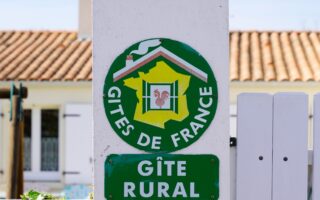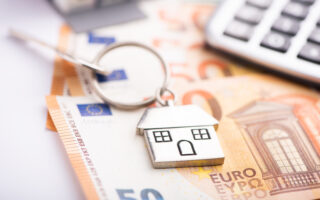Divine Renovation: A Case Study in France
Case Study
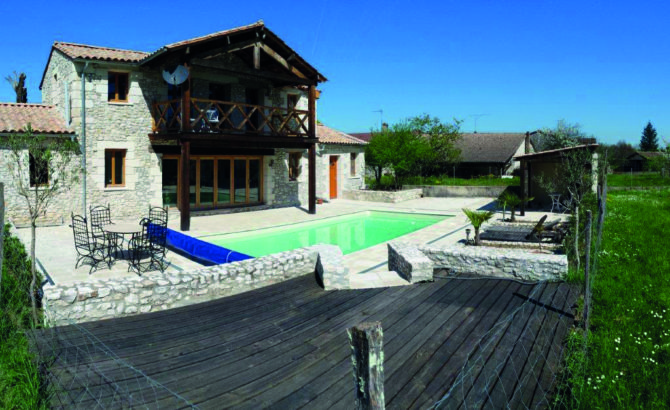
Sylvia Edwards Davis talks to James Linton to find out whether his renovation of La Chapelle was closer to heaven… or hell.
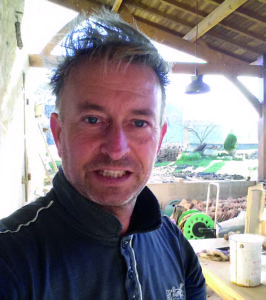 James Linton helped finance a friend’s renovation, never expecting to suddenly find himself an owner. After that property was sold, he set out to find another renovation project and was intrigued by an ad for a Protestant temple in the southwestern village of Loubès-Bernac, a half-hour drive from Bergerac. After initial help from a team of builders, he was left to his own devices, with a clear vision in mind.
James Linton helped finance a friend’s renovation, never expecting to suddenly find himself an owner. After that property was sold, he set out to find another renovation project and was intrigued by an ad for a Protestant temple in the southwestern village of Loubès-Bernac, a half-hour drive from Bergerac. After initial help from a team of builders, he was left to his own devices, with a clear vision in mind.
FrenchEntrée Magazine: How did you decide on the location?
James Linton: Although I had enjoyed Riberac, where the first property was, it was a little too north. I decided to look within a half-hour drive of Bergerac, in a village with a shop and restaurant. I would invest three years of my time, learn new skills, and then return to the UK. Part of the attraction of this area is the beauty of the bastide towns and their architecture. It’s rural and farming is a large part of the economy, with vineyards, sunflowers or maize. The summer months are filled with markets, village fêtes, plus endless outdoor activities. The coast is just under two hours away – a run to the gorgeous seaside town of Arcachon is a day trip. The winter months are a lot quieter.
FE: You don’t hear of people buying chapels every day. What condition was it in?
JL: Well, let’s say it was requiring plenty of TLC. It had gone through several owners, but none had progressed further than installing a pool – which was an added bonus. The chapel itself had not been touched and the locals told me the roof had disappeared 40 years prior, so by now the walls were starting to bow and fall down. I was hopeful that I could save most of the structure and, with planning permission in place, I took the plunge. My retired parents, who had viewed the ruin, thought it was too much work, but I had a vision.
FE: Tell us about La Chapelle as it is today.
JL: The rebuilt chapel measures 9m by 5m and is now the living room, which leads through to the kitchen dining area in the extension and through 5m bifold doors to the pool. The three bedrooms and bathrooms are in the attached extension. The chapel features four stained glass windows inspired on drawings by Henri Matisse. The architect’s original plans had plain double-glazed windows, but thinking it would be sacrilege I went for stained glass.
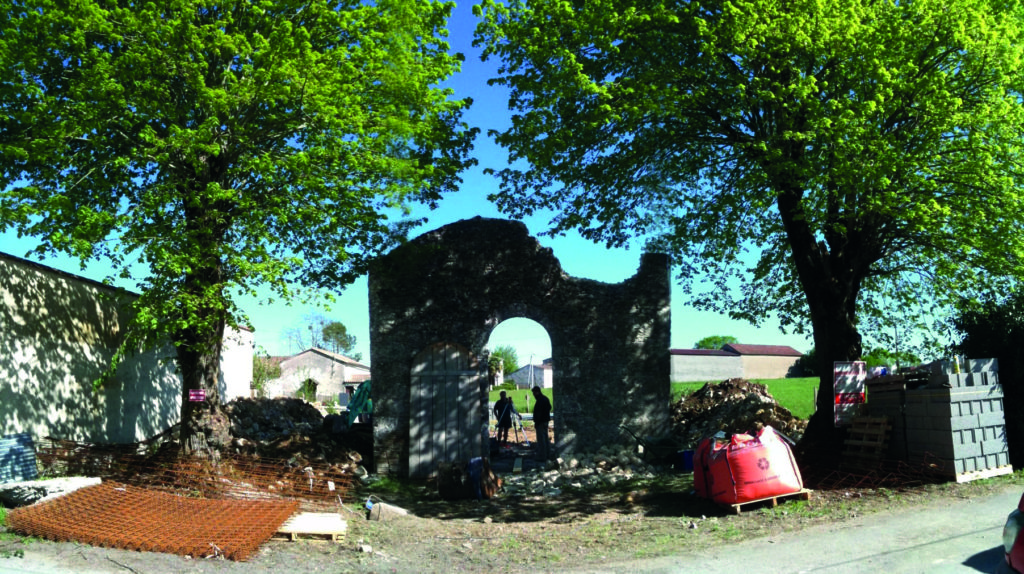
© James Linton
FE: How did you approach the renovation?
JL: I was lucky to have a three-month wait between signing the compromis de vente until completion. This time was a valuable chance to plan almost every aspect of the chapel from plumbing to electrical. While still in Plymouth I found a local stained glass expert. I asked him if, after learning the basics, I would be able to do a window by myself. He was delighted to train someone who had a project in mind. After several weeks of the basics, I started on the first of a dozen panes, working on my kitchen table. The decision to incorporate stained glass windows was one of the best when planning the chapel. For the initial stage of the build I put together a team of four builders from the UK, bought a large van, and set off (of all days) on April 1, 2011. I rented an apartment in Duras for three months, after which I would be left on my own to finish the build. This was the amount of time we thought it would take to get the main structure watertight.
FE: How did the plan work out?
JL: On the first day it was already painfully obvious that the walls of the chapel had suffered after decades of water ingress. The mortar, in this case clay, had turned to sand. It was a house of cards; you could push a wall down with your bare hands. My gamble to save the main structure had not paid off. But we were able to save three quarters of the front wall and the all-important window surrounds for the stained glass, numbering the stones and putting them aside for later. After the initial disappointment of being back to square one, we realised that the renovation had now become practically a new build with the advantages of being able to create proper foundations, a new floor with a damp-proof course, and new walls. The result would be structurally stable and hopefully more energy efficient. After the initial three months, the main structure was up and the roof timbers were in place. At that point the time with the team was up, so I was now on my own to finish the build.
FE: So, now that you were on your own, was it scary?
JL: The house wasn’t quite watertight, so the first priority was to tile the roof and to fit doors and windows. It was summer so I moved out of the apartment into the chapel. I had running water and electricity and a hastily plumbed-in toilet, but the lack of roof and windows made it a lot like a campsite. I had no hot water, so the hose pipe would be left in the sun throughout the day. By evening time the water was extremely hot, so showering in the garden was a daily ritual. Sitting in the dark and watching the bats fly through the chapel was a novel way to spend my evenings!
Some ‘problems’ turned into opportunities, like the stained glass. Another challenge was how to create access to the first floor. Standard stairs would have obscured a window, so I needed to find a spiral staircase of the correct height and width. I scoured the Internet for weeks and eventually found a close match on eBay… in Swansea. Somehow I missed the auction date, not once, but twice. I contacted the seller and by a miracle it was still available, and I collected it on my next trip to the UK.
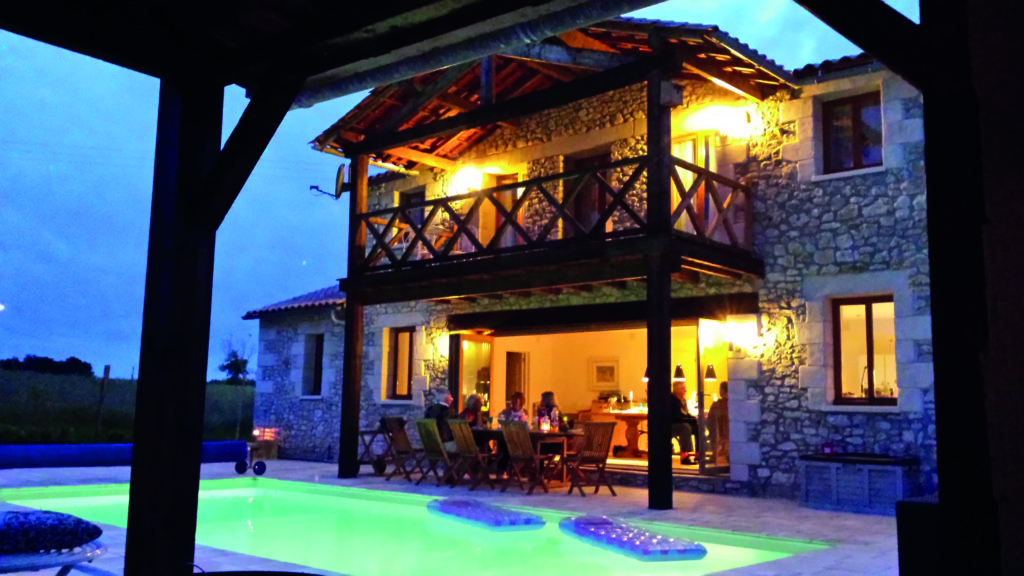
© James Linton
FE: What has become your favourite ‘corner’ of the property now?
JL: Of my three favourite parts of the house, none were in the original plans. The bifold doors that open to the pool were to be standard double doors. The spiral staircase features grapes and vines on the handrail uprights. Being surrounded by vineyards, finding such a staircase in the Welsh valleys was a blessing. Probably my favourite aspect is the stained glass. The Matisse designs were chosen for the simplicity of his famous cut-outs. The beauty of the light they create never ceases to fascinate me as the sun moves around the chapel.
FE: Can we talk about the budget?
JL: I had allowed £100,000 for the purchase and build. With the first 90 days swallowing an average of £1,000 a day, it became evident that an extension of the budget was required. I wanted to finish the project and I didn’t really care how long or how much it took. I had a keen eye for bargains and time on my side. I’d estimate that the final spend was around £150,000, so 50% over my original, rather optimistic, budget.
FE: Did you need financing? Have you got any tips for future buyers?
JL: I was fortunate that I already had a loan, then dormant, with Crédit Agricole for the first property, so I had a good credit history. For anyone looking at a finance package today, I think securing a loan in France has become a lot more difficult for expats; possibly as a consequence of people defaulting and leaving the banks holding the baby.
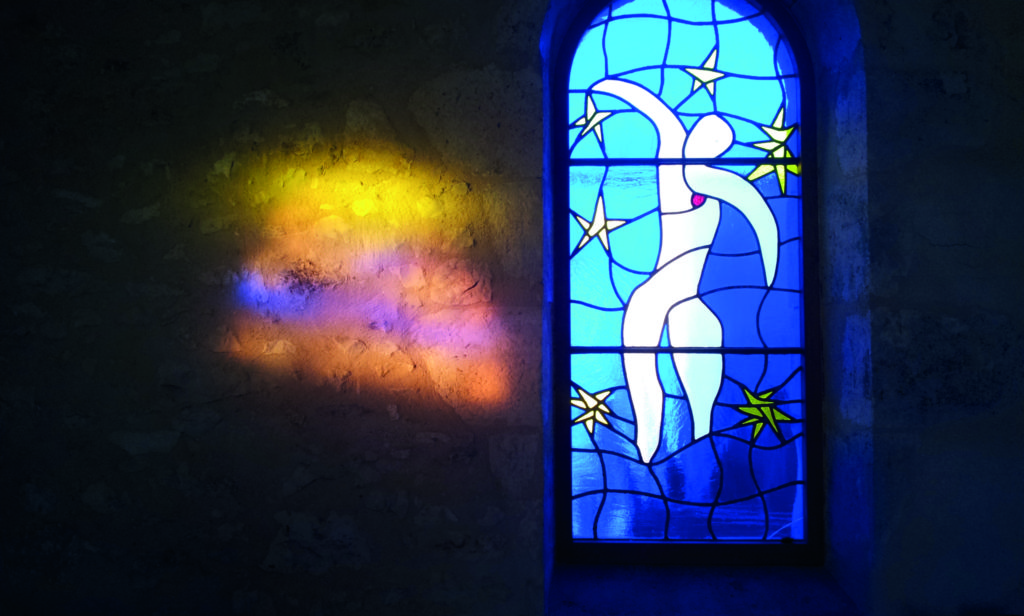
© James Linton
FE: La Chapelle is available as a holiday rental. Does it make sense financially?
JL: Since I started offering rented accommodation in France 14 years ago, the market has become saturated. Filling your season can be difficult. I’m fortunate that the chapel is unique and in a great location, but gîtes are good as a supplementary income, not to make a living.
FE: Language and bureaucracy are frequent obstacles. What was your experience?
JL: I had imagined that in committing myself to a project, I would soon pick up a basic knowledge of French. I was surprised at the number of British people living in the area and took the easy way out and socialised mainly with expats. After working long days it was a far easier option to accept an evening’s hospitality with English-speaking locals. I’m a lot more confident with my French now. As far as paperwork, we are fortunate that the mayor of our village is very supportive, not just for my project but in general. He can see that overall the French are less interested in restoring old properties, so one way to rejuvenate the heart of a village is through British and Dutch investors.
FE: What was the worst thing that happened during the renovation?
JL: Breaking my ankle on the third day of the project! I stepped off a ladder onto a small stone. I hobbled around for several weeks. Six months later it was still bothering me, I had it X-rayed and the hospital confirmed that it had indeed been broken. By then there was little point in breaking it again to reset it.
FE: In contrast, what was the best day of the whole experience?
JL: There have been many best days, which is why my three-year deadline has come and gone and I haven’t returned to the UK.
GLOSSARY: BUILDING AND RENOVATION
Useful words when dealing with a property purchase and restoration
chantier – building site
échaufaudage – scaffolding
poutre – beam
échelle – ladder
chevron – rafter
toiture – roofing
fenêtre – window
bétonnière – concrete mixer
Originally published in issue 120 of FrenchEntrée magazine.
Share to: Facebook Twitter LinkedIn Email
More in renovation
Leave a reply
Your email address will not be published. Required fields are marked *

